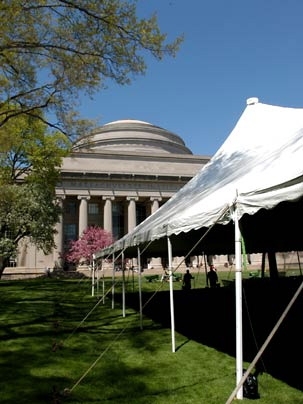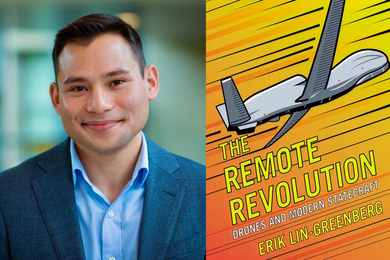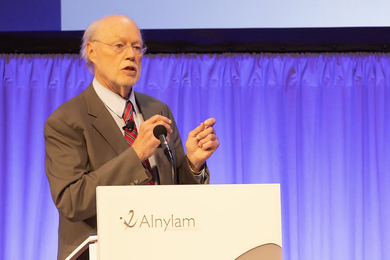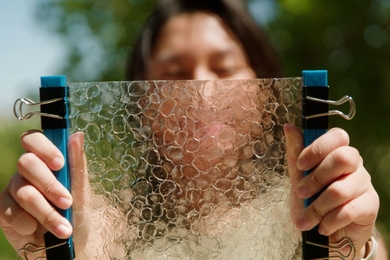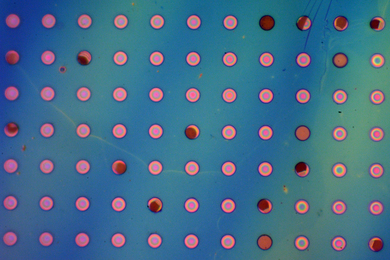The inaugural ceremony on May 6 celebrates not only the beginning of Susan Hockfield's term as MIT's 16th president, but also marks a new phase for the Institute itself.
Hockfield will be welcomed by more than 60 delegates from the worldwide academic community who will have traveled to MIT from Japan, England, California, North Carolina, Minnesota and elsewhere both to celebrate the Institute's new president and to participate in one of the main traditions of academe--the inaugural ceremony.
The word inauguration is defined as a "rite of passage that marks a formal induction to an office," according to MIT's official inauguration web site. The many delegates from the Academy come to celebrate this start of a new era for MIT.
In accordance with tradition, an academic procession will precede the ceremony. The delegates will march in academic dress from Walker Memorial to Killian Court starting at about 1:45 p.m. Friday. Following the traditional order for an inauguration, delegates of academic institutions will be followed by delegates of learned societies and other associations, followed by faculty, trustees and speakers. The new president processes last.
Delegates march in order of the founding dates of their institutions.
For Hockfield's inauguration, the first delegate to process will be Neil Malcolm of the University of Oxford, which was founded at the end of the 11th century. David Good of the University of Cambridge, founded in 1209, will follow. The first delegate from an American University will be Lawrence Summers, president of Harvard University, founded in 1636, who will be third in line. Former MIT Chancellor Lawrence Bacow, now the president of Tufts University in Medford, will also process.
The academic robes that delegates wear date back to the 12th and 13th centuries and are a holdover from the days when most academics were also clerics. Black is the standard color of robes for bachelor and master degree robes. Doctoral degree robes can be either black or a special design and color designated by the institution. Since the robes worn by governing board members and other officials are often quite different from the standard, there should be a variety of robes on view Friday.
Hockfield's robe is based on the robe worn by President Emeritus Paul Gray during commencements, which is not the one he wore for his own inauguration. It is described on the official inauguration web site as a "modified doctoral degree robe in silver-gray with silver-gray velvet front panels, extending around the neck to a V-point in the back, and to the bottom of the hem in front. There are five cardinal red bars outlined in silver-gray piping on the left sleeve, representing MIT's five academic schools. A cardinal red stole outlined in silver-gray piping displays 16 decorative horizontal 'figure 8' motifs, representing the number of MIT presidents and is draped over the left shoulder. The sleeves and yoke are lined with red satin. An eight-sided, silver-gray tam with a metallic-silver tassel is worn with the robe." Hockfield chose not to wear the hood of her alma mater as part of her presidential regalia.
There are standards for the hoods worn by the Academy. According to the inauguration web site: "All hoods are black and lined with the color or colors of the institution conferring the degree. The velvet trim is indicative of the subject to which the degree pertains. No hood should ever have its trim divided to represent more than one degree.
"Black mortarboards with black tassels are the standard to be worn by all degree recipients. The only exception is for those with a doctoral degree or officials of institutions who may wear a tam with a gold tassel or of a color coordinated to special design regalia."
Once the procession arrives at Killian Court, an honor guard, made up of members of the MIT Campus Police Honor Guard and MIT ROTC cadets, will head down the center aisle of the ceremony tent, ascend the stage and present flags. Next, the delegates will be led down the aisle by the chief marshal, who will carry a ceremonial mace.
The chief marshal is James Champy, life member of the MIT Corporation. Champy headed the Corporation Committee on the Presidency.
A version of this article appeared in MIT Tech Talk on May 4, 2005 (download PDF).
